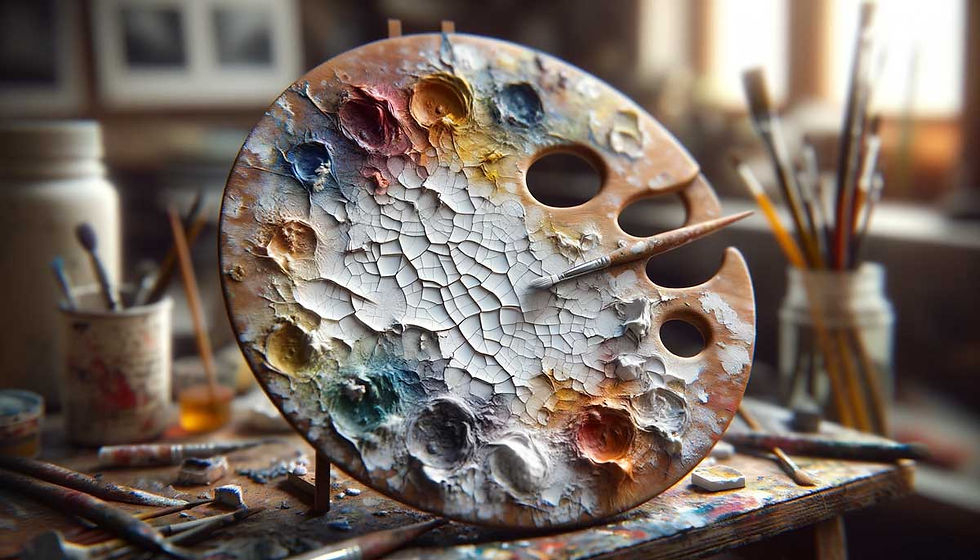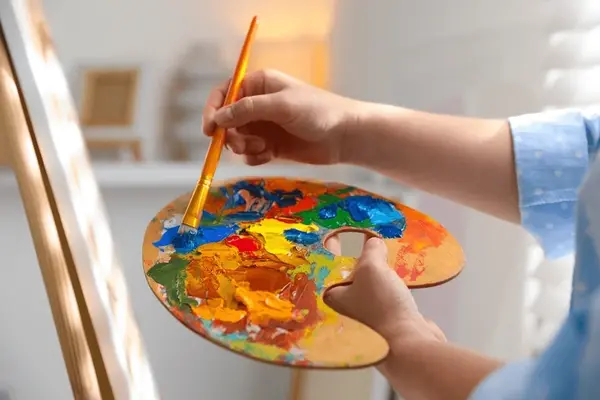What Is a Vinyl Paint Palette? – Benefits & How It Works
- vinylizeglasses
- May 28
- 4 min read

Turning Old Records Into Something Surprisingly Useful
Let’s be real: most people wouldn’t think twice about tossing out an old, scratched vinyl record. It’s just junk, right? Not anymore. Some clever folks have found a creative way to give those dusty records a new life—by turning them into vinyl paint palettes.
Sounds a bit odd at first, I know. But once you see one in action, it clicks. They're smooth, durable, easy to clean—and they come with a story. If you're someone who paints often or just enjoys eco-friendly tools, this might be something worth knowing about.
What’s a Vinyl Paint Palette, Anyway?
Not Your Average Paint-Mixing Surface
At its core, a vinyl paint palette is just what it sounds like: a flat surface used by artists to mix paint. But instead of being made from wood, glass, or plastic, it's made from old vinyl records—the kind your parents (or grandparents) might’ve played on a turntable.
These records, once unplayable or unwanted, get cleaned up, reshaped if needed, and turned into something both useful and unique. Some still have the original center label, which adds a cool retro vibe. Each one’s a little different.
Why Do Artists Use Recycled Records?
It's Eco-Friendly, Which Just Feels Right
Artists are creative by nature, but many are also pretty conscious of the waste their work can create. Between disposable brushes, plastic packaging, and dried-up paint tubes, it adds up.
Choosing a recycled vinyl paint palette is one small way to cut down on waste. Instead of tossing more plastic into the world, you’re reusing something that already exists—and doing it in style.
Cleaning Them Is Surprisingly Simple
One of the biggest frustrations with traditional palettes is cleanup. Paint gets stuck in wood grain, or it leaves stains that won’t come off.
Vinyl? Way easier. The surface is non-porous, which means paint just sits on top. You can wipe it off with a cloth, scrape it off when it dries, or rinse it under water without much trouble.
No soaking. No scrubbing for half an hour. Just a quick clean and you’re back at it.
They Have Personality
Honestly, a big part of the appeal is that they just look cool. A vinyl palette isn’t sterile or boring—it has character. Whether it still shows part of the label or has a few grooves left behind, there’s something about it that feels different.
You can almost imagine what the record used to play. Maybe it was jazz, maybe punk rock. Either way, it brings a bit of soul to your workspace.
They're Built to Last
Here’s something we don’t often think about: vinyl records were made to endure. People spun them hundreds, even thousands of times. That same material, once reshaped into a palette, doesn’t warp or crack easily. With a little care, it could outlast most of your other tools.
How These Palettes Are Made
Let’s walk through how a record goes from forgotten relic to artistic sidekick.
Step One: Finding the Records
These aren’t pulled from pristine collections or valuable pressings. Most of them come from secondhand shops, donation bins, or boxes of records that are too scratched to play. It’s about rescuing something destined for the landfill.
Step Two: Cleaning Things Up
Before turning them into palettes, the records get a good clean—think warm water, gentle soap, and maybe a toothbrush for the grooves. Some makers keep the label, some don’t. Either way, the goal is a clean surface for mixing paint.
Step Three: Shaping and Finishing
Sometimes the records are cut into more comfortable shapes—like a painter’s oval with a thumb hole. Other times, they stay round. The surface is usually smoothed out and sealed to protect it from paint and solvents.
By the time it's done, you’ve got something that looks cool, feels solid in your hand, and works beautifully in the studio.
Using a Vinyl Palette: The Basics
What Kinds of Paint Work Well?
These palettes are best suited for:
Acrylics
Oils
Gouache
Water-mixable oils
Watercolor might not behave quite as well on the slick surface, but with a little experimentation, it can work too.
Cleanup Tips That Keep Things Easy
Wipe it with a cloth while the paint is still wet
If it dries, peel or scrape gently
Don’t soak it in water too long
Store it flat to avoid bending
Treat it right, and you won’t need another palette for a long time.
What Artists Are Saying
There’s a growing number of painters who’ve made the switch. One oil painter told me it was their “favorite studio upgrade of the year.” Another said it sparked new ideas, just because it felt different from the usual gear.
Someone else even joked, “Now I mix my paints on Fleetwood Mac.” Can’t beat that.
Beyond the humor, though, they all mentioned how much they appreciated the combination of practicality and eco-consciousness.
A Small Change That Adds Up
Let’s face it—no one’s going to save the planet with just a paint palette. But if you’re someone who cares about how your art impacts the world, this is one of those little changes that just makes sense.
It’s functional, it’s affordable, and it tells a story. What more could you want?
Final Thoughts
In a world full of throwaway products, a recycled vinyl paint palette stands out. It’s a conversation starter, a reliable tool, and a quiet nod to sustainability.
So if you’ve never tried one, maybe it’s time to give it a shot. It’s not just about mixing paint—it’s about mixing creativity with intention.



Comments